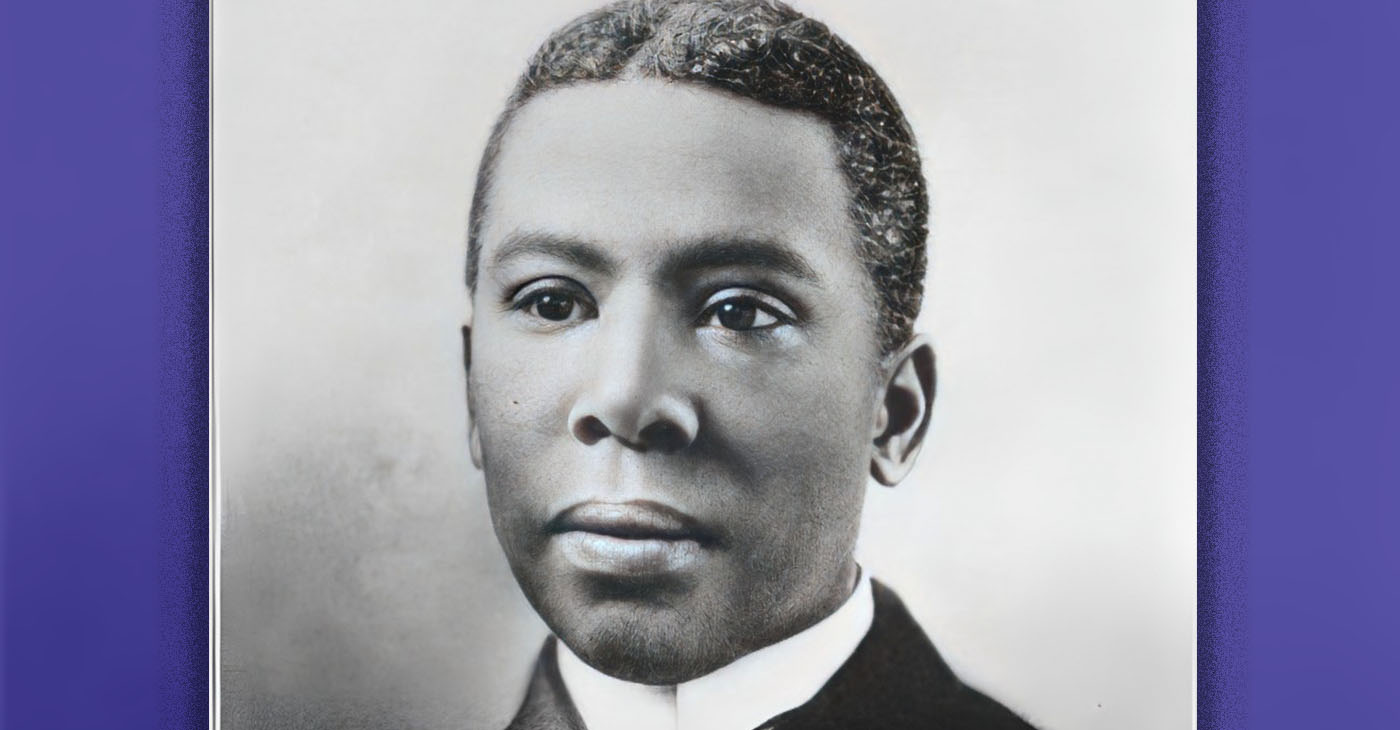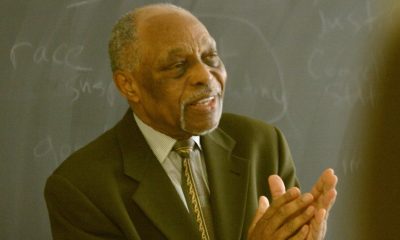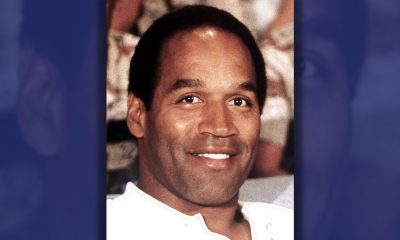Black History
Paul Laurence Dunbar: The Trailblazing Poet and Literary Luminary
Paul Laurence Dunbar, born on June 27, 1872, emerged as one of the most influential Black poets in American literature. His powerful dialect verse and extensive literary contributions made him a celebrated figure both nationally and internationally.

By Tamara Shiloh
Paul Laurence Dunbar, born on June 27, 1872, emerged as one of the most influential Black poets in American literature. His powerful dialect verse and extensive literary contributions made him a celebrated figure both nationally and internationally.
While attending high school in Dayton, Ohio, Dunbar showed remarkable literary promise. Despite being the only African American student in his class, he excelled as a poet and editor, immersing himself in various literary endeavors.
By the time he graduated in 1889, Dunbar had already published poems in local newspapers and worked as an editor for a Black newspaper. His early writings displayed a deep understanding of racial and societal issues, foreshadowing the profound themes that would come to define his literary works.
Dunbar initially aspired to pursue a career in law, but financial constraints prevented him from attending university. He found employment as an elevator operator, which allowed him time to continue writing.
During this period, Dunbar produced articles, short stories, and poems, including his notable dialect poems that would later gain him recognition. In 1892, he was invited to address the Western Association of Writers, which led to increased exposure and support from prominent literary figures such as James Whitcomb Riley.
Bolstered by their encouragement, Dunbar self-published his first collection of poems, “Oak and Ivy,’’ in 1893, garnering widespread acclaim.
His subsequent collection, “Majors and Minors,” brought him even greater fame, particularly through the positive review by acclaimed writer William Dean Howells. Dunbar’s dialect poems resonated with readers, and his work was praised for its faithful portrayal of African American experiences.
Dunbar continued to publish poetry collections, short stories, and novels, exploring themes of racial prejudice and the impact of slavery. Despite some criticism for perpetuating stereotypes, Dunbar’s contributions to African American literature were invaluable and sparked important discussions about race and identity.
Diagnosed with tuberculosis, Paul Laurence Dunbar’s health declined rapidly in his final years, and he passed away on Feb. 9, 1906, at the age of 33. In the years following his death, his reputation faced scrutiny, but in recent times, Dunbar’s stature has risen once again. His works are celebrated for capturing the history and celebration of Black life, solidifying his place as a literary luminary.
Paul Laurence Dunbar’s literary legacy as a pioneering Black poet remains a significant contribution to American literature, shedding light on the experiences of African Americans during the turn of the 20th century and securing his place as a seminal figure in literary history.
Wikipedia is the source for this story.
Activism
Oakland Post: Week of April 24 – 30, 2024
The printed Weekly Edition of the Oakland Post: Week of April 24 – 30, 2024

To enlarge your view of this issue, use the slider, magnifying glass icon or full page icon in the lower right corner of the browser window. ![]()
Activism
Oakland Post: Week of April 17 – 23, 2024
The printed Weekly Edition of the Oakland Post: Week of April 17 – 23, 2024

To enlarge your view of this issue, use the slider, magnifying glass icon or full page icon in the lower right corner of the browser window. ![]()
Black History
Matthew Henson: Explorer Extraordinaire
Matthew Henson, a trailblazing explorer who overcame countless obstacles to leave an incredible mark on history. Born on August 8, 1866, in Charles County, Maryland, his journey is a testament to the power of determination and the spirit of adventure.

By Tamara Shiloh
Matthew Henson, a trailblazing explorer who overcame countless obstacles to leave an incredible mark on history. Born on August 8, 1866, in Charles County, Maryland, his journey is a testament to the power of determination and the spirit of adventure.
Henson’s life began amidst the backdrop of post-Civil War America, where opportunities for African Americans were scarce. From a young age, he possessed an insatiable curiosity about the world beyond his small town. At the age of 12, he embarked on a journey that would change the course of his life forever when he joined a merchant ship as a cabin boy.
His most famous expedition was his journey to the Arctic with renowned explorer Robert E. Peary. In 1887, Henson joined Peary’s crew as a seaman and quickly proved himself to be invaluable with his skills as a navigator and craftsman. Over the course of several expeditions, Matthew endured extreme cold, treacherous terrain, and grueling conditions as he and Peary sought to reach the elusive North Pole.
In 1908–09, Peary set out on his eighth attempt to reach the North Pole. It was a big expedition, with Peary planning to leave supplies along the way. When he and Henson boarded their ship, the Roosevelt, leaving Greenland on August 18, 1909, they were joined by a large group. This included 22 Inuit men, 17 Inuit women, 10 children, 246 dogs, 70 tons of whale meat, blubber from 50 walruses, hunting gear, and tons of coal.
In February, Henson and Peary left their anchored ship at Ellesmere Island’s Cape Sheridan, along with the Inuit men and 130 dogs. They worked together to set up a trail and supplies along the way to the Pole.
Peary picked Henson and four Inuit people to join him in the final push to the Pole. However, before they reached their destination, Peary couldn’t walk anymore and had to ride in a dog sled. He sent Henson ahead to scout the way. In a later interview with a newspaper, Henson recalled being in the lead and realizing they had gone too far. The group turned back, and Henson noticed his footprints helped guide them to their destination. At that location, Henson planted the American flag.
Henson’s legacy extends far beyond his expeditions to the Arctic. He shattered racial barriers in the world of exploration and inspired countless individuals, regardless of race, to dream big and pursue their passions. In 1937, he was finally recognized for his achievements when he was inducted into The Explorers Club, an organization dedicated to promoting scientific exploration and field research.
Matthew Henson died in the Bronx, New York, on March 9, 1955, at the age of 88.
-

 Activism4 weeks ago
Activism4 weeks agoOakland Post: Week of March 27 – April 2, 2024
-

 #NNPA BlackPress4 weeks ago
#NNPA BlackPress4 weeks agoBeloved Actor and Activist Louis Cameron Gossett Jr. Dies at 87
-

 Community2 weeks ago
Community2 weeks agoFinancial Assistance Bill for Descendants of Enslaved Persons to Help Them Purchase, Own, or Maintain a Home
-

 Activism3 weeks ago
Activism3 weeks agoOakland Post: Week of April 3 – 6, 2024
-

 Business2 weeks ago
Business2 weeks agoV.P. Kamala Harris: Americans With Criminal Records Will Soon Be Eligible for SBA Loans
-

 Activism2 weeks ago
Activism2 weeks agoOakland Post: Week of April 10 – 16, 2024
-

 Community2 weeks ago
Community2 weeks agoAG Bonta Says Oakland School Leaders Should Comply with State Laws to Avoid ‘Disparate Harm’ When Closing or Merging Schools
-

 Community1 week ago
Community1 week agoOakland WNBA Player to be Inducted Into Hall of Fame






















































